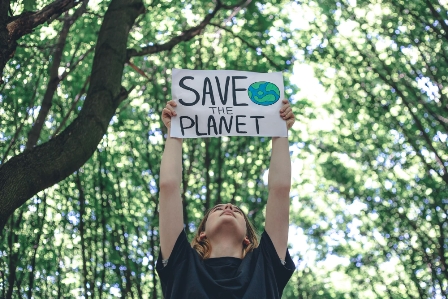In an era where environmental concerns are at the forefront of global discussions, the concept of environmental justice has gained significant importance. Environmental justice is about ensuring that all individuals and communities, regardless of their background or socioeconomic status, have equal access to environmental benefits and are protected from environmental harm. This article delves into the intricacies of environmental justice law and policy, emphasizing the need for a sustainable future. We will explore its history, principles, implementation, and the significant impact it has on society, the environment, and the legal landscape.
Environmental justice is not just a legal or political concept; it is a moral imperative. It addresses the disparities in environmental burdens and benefits that affect marginalized communities. This article aims to shed light on the evolution of environmental justice law and policy and its significance in ensuring a sustainable future for all.
Understanding Environmental Justice
Defining Environmental Justice
At its core, environmental justice is the fair treatment and meaningful involvement of all people, regardless of race, color, national origin, or income, concerning the development, implementation, and enforcement of environmental laws, regulations, and policies.
The Historical Context
Environmental justice didn’t emerge overnight. It has its roots in the civil rights movement of the 1960s when marginalized communities raised their voices against environmental injustices. Over the years, the movement gained momentum, leading to the formulation of specific policies and laws.
Principles of Environmental Justice

Equity and Fairness
One of the fundamental principles of environmental justice is equity. It dictates that no group of people should bear a disproportionate share of negative environmental consequences resulting from industrial, governmental, and commercial operations.
Community Involvement
Environmental justice advocates for meaningful and inclusive community involvement in decisions that affect their environment. This principle empowers communities to have a say in what happens in their surroundings.
Transparency and Accountability
Transparency and accountability are essential to ensure that environmental policies are implemented without bias. This principle holds decision-makers accountable for their actions.
Legislation and Policies
The National Environmental Policy Act (NEPA)

NEPA, enacted in 1970, was one of the early legislations that set the stage for environmental justice. It required federal agencies to assess the environmental and social impacts of their actions.
Executive Order 12898
This executive order, signed in 1994, directed federal agencies to address environmental justice in minority and low-income populations, emphasizing the importance of fair treatment.
Environmental Justice in Action
Case Study: Flint, Michigan Water Crisis
The Flint water crisis serves as a stark reminder of the consequences of environmental injustice. It exposed the dangers of neglecting the water quality in marginalized communities.
Grassroots Movements
Throughout history, grassroots movements have played a pivotal role in advocating for environmental justice. These movements are instrumental in pressuring policymakers to address inequalities.
Challenges and Barriers
Political and Economic Factors
Political and economic interests often hinder the progress of environmental justice initiatives. Powerful stakeholders may resist changes that could affect their profits.
Legal Hurdles
Environmental justice cases can face legal hurdles, making it challenging for affected communities to seek redress. This underscores the need for a robust legal framework.
Environmental Justice and Health

Disproportionate Health Impacts
Environmental injustice often results in disproportionate health impacts on marginalized communities, leading to higher rates of illnesses and decreased life quality.
The Link between Pollution and Health
Exposure to pollutants due to environmental injustice can lead to respiratory diseases, cancers, and developmental issues, highlighting the direct link between environmental and public health.
Global Perspectives
International Environmental Justice
The principles of environmental justice extend beyond national borders. Many global movements advocate for environmental equity on a worldwide scale.
Climate Justice
As the world grapples with climate change, climate justice emphasizes that the poorest and most vulnerable communities should not bear the brunt of climate-related disasters.
Achievements and Progress
Landmark Environmental Justice Cases
Several landmark cases have set important legal precedents for environmental justice, ensuring that vulnerable communities can seek justice.
Policy Changes
Over the years, environmental justice advocacy has led to policy changes that aim to level the playing field and protect marginalized communities.
The Role of NGOs and Advocacy Groups
Non-governmental organizations and advocacy groups are at the forefront of environmental justice efforts. They work tirelessly to promote fairness and inclusivity.
Future Directions
Technological Advancements
- Data Collection and Analysis:
Technology enables the collection of vast amounts of data on environmental conditions, including air and water quality, pollution levels, and environmental hazards. This data is crucial for identifying disparities and monitoring environmental injustices.
- Geographic Information Systems (GIS):
GIS technology allows for the visualization and mapping of environmental data, helping to identify areas with high pollution levels, vulnerable communities, and disparities in resource allocation.
- Remote Sensing:
Remote sensing technologies, such as satellite imagery and drones, provide valuable insights into environmental changes, enabling better tracking of illegal activities and environmental degradation in marginalized areas.
- Environmental Sensors:
Low-cost environmental sensors can be deployed in communities to monitor air and water quality in real-time. This empowers communities to collect data and advocate for environmental justice.
- Big Data and AI:
Big data analytics and artificial intelligence can process and analyze large datasets to identify patterns and trends related to environmental injustices, helping policymakers make informed decisions.
Sustainable Practices
- Environmental Conservation:
Sustainable practices entail the responsible use and conservation of natural resources. This includes efforts to reduce waste, conserve water, protect biodiversity, and ensure the long-term health of ecosystems.
- Renewable Energy:
Transitioning to renewable energy sources, such as wind, solar, and hydropower, is a central component of sustainability. These sources reduce greenhouse gas emissions, mitigate climate change, and create jobs in the green energy sector.
- Energy Efficiency:
Sustainable practices encompass energy efficiency measures in industries, transportation, and households. This not only reduces energy costs but also decreases environmental impacts.
- Waste Reduction and Recycling:
Reducing waste and implementing recycling programs help divert materials from landfills, conserve resources, and minimize pollution. Sustainable waste management is an essential part of this practice.
- Sustainable Agriculture:
Sustainable agriculture techniques, like organic farming and crop rotation, promote soil health, reduce chemical pesticide usage, and ensure the long-term productivity of agricultural land.
Economic Implications

Sustainable Economic Growth:
Environmental justice doesn’t have to be at odds with economic growth. In fact, it can foster sustainable economic development. By addressing environmental inequalities, we create opportunities for communities that have been historically marginalized, potentially leading to increased economic prosperity in these areas.
External Costs:
Failing to address environmental injustices often results in external costs. These costs include healthcare expenses associated with pollution-related illnesses and the expenses required to remediate environmental damage. Environmental justice can help reduce these costs by preventing the disproportionate pollution burden on marginalized communities.
Resource Efficiency:
Embracing environmental justice can promote resource efficiency. Sustainable practices and equitable resource allocation can minimize waste and overexploitation of resources, ultimately leading to long-term economic benefits.
Attracting Investment:
Areas that prioritize environmental justice can attract socially responsible investments. Companies and investors are increasingly looking for locations where they can operate sustainably and ethically, which can boost local economies.
Legal and Compliance Costs:
Failing to address environmental injustices can result in legal and compliance costs for businesses and governments. Lawsuits, fines, and regulatory challenges can be costly. Embracing environmental justice can help prevent such legal and financial burdens.
Education and Awareness
Raising Awareness:
Environmental justice hinges on the concept that everyone, regardless of their background or socioeconomic status, deserves a clean and safe environment. Yet, many individuals remain unaware of the disparities and injustices that persist in the distribution of environmental benefits and burdens. This lack of awareness can perpetuate environmental inequalities.
Promoting Environmental Literacy:
Education is a powerful tool for change. By incorporating environmental justice into school curriculums and promoting environmental literacy, we can ensure that the next generation is well-informed and conscious of the importance of fair treatment and inclusivity in environmental decision-making.
Engaging Communities:
Environmental justice issues often affect marginalized communities the most. Empowering these communities with the knowledge and resources to advocate for their rights is essential. Education can help communities understand the environmental challenges they face and equip them with the tools to demand fair treatment.
Advocacy and Grassroots Movements:
Awareness drives advocacy. When people become aware of environmental injustices, they are more likely to join grassroots movements, engage in protests, and support policy changes that promote environmental equity. These movements often catalyze positive reforms.
Media and Information:
The media plays a significant role in disseminating information. Journalists, filmmakers, and social media influencers can contribute to the cause by highlighting environmental justice issues and showcasing the stories of affected communities. This media exposure can amplify the message of equity and justice.
Environmental Organizations:
Environmental organizations and NGOs dedicated to environmental justice are instrumental in increasing awareness. They conduct research, organize events, and provide resources to educate the public and policymakers about the importance of addressing environmental disparities.
Public-Private Partnerships:
Collaboration between the public and private sectors can also play a crucial role. Businesses and industries can contribute to raising awareness by adopting sustainable and equitable practices and by funding educational initiatives.
Government Initiatives:
Governments at various levels can enact policies that promote environmental education and awareness. This can include supporting research, funding public awareness campaigns, and integrating environmental justice principles into their decision-making processes.
FAQs
Here are the answers to the frequently asked questions related to environmental justice:
The environmental justice policy refers to a set of principles, regulations, and guidelines aimed at addressing and rectifying environmental inequalities and ensuring that all individuals and communities, regardless of their background, have equal access to environmental benefits and protection from environmental harm. It encompasses measures to prevent the disproportionate burden of environmental issues on marginalized communities.
In California, the environmental justice (EJ) policy is a comprehensive framework that emphasizes addressing environmental disparities and promoting fairness in environmental decision-making. California has various EJ policies and initiatives, such as the California Environmental Protection Agency’s Environmental Justice Program, which seeks to incorporate environmental justice considerations into regulatory processes, ensuring that vulnerable communities are not adversely affected by environmental actions.
The three key components of environmental justice are equity and fairness, community involvement, and transparency and accountability. These principles guide the formulation and implementation of policies and actions to ensure that environmental benefits and burdens are distributed justly and that marginalized communities have a voice in decisions that impact their environment.
Environmental justice issues can encompass a wide range of concerns. Three examples include:
Disproportionate exposure to air and water pollution in low-income neighborhoods.
Lack of access to safe drinking water in marginalized communities.
Unequal distribution of the health impacts of hazardous waste and industrial facilities on vulnerable populations.
Two prominent examples of environmental justice in the United States include:
The Flint, Michigan water crisis, where a predominantly African American community was exposed to lead-contaminated water.
The Standing Rock Sioux Tribe’s protest against the Dakota Access Pipeline, highlighting the intersection of environmental and social justice in the fight to protect sacred land and water resources.
Four social issues that often lead to environmental injustice are:
Systemic racism and discrimination, resulting in vulnerable communities bearing a disproportionate environmental burden.
Socioeconomic disparities, with low-income communities facing higher exposure to environmental hazards.
Lack of political representation and influence, preventing marginalized groups from participating in decision-making processes.
Insufficient access to information and resources, leaving disadvantaged communities unaware of, or unable to address, environmental challenges effectively.
Conclusion
Environmental justice is pivotal in creating a future where everyone, regardless of their background, enjoys a clean and safe environment. As society becomes increasingly aware of the importance of this issue, the legal and policy frameworks surrounding environmental justice are expected to evolve, bringing us closer to a world where sustainability and equality go hand in hand.

